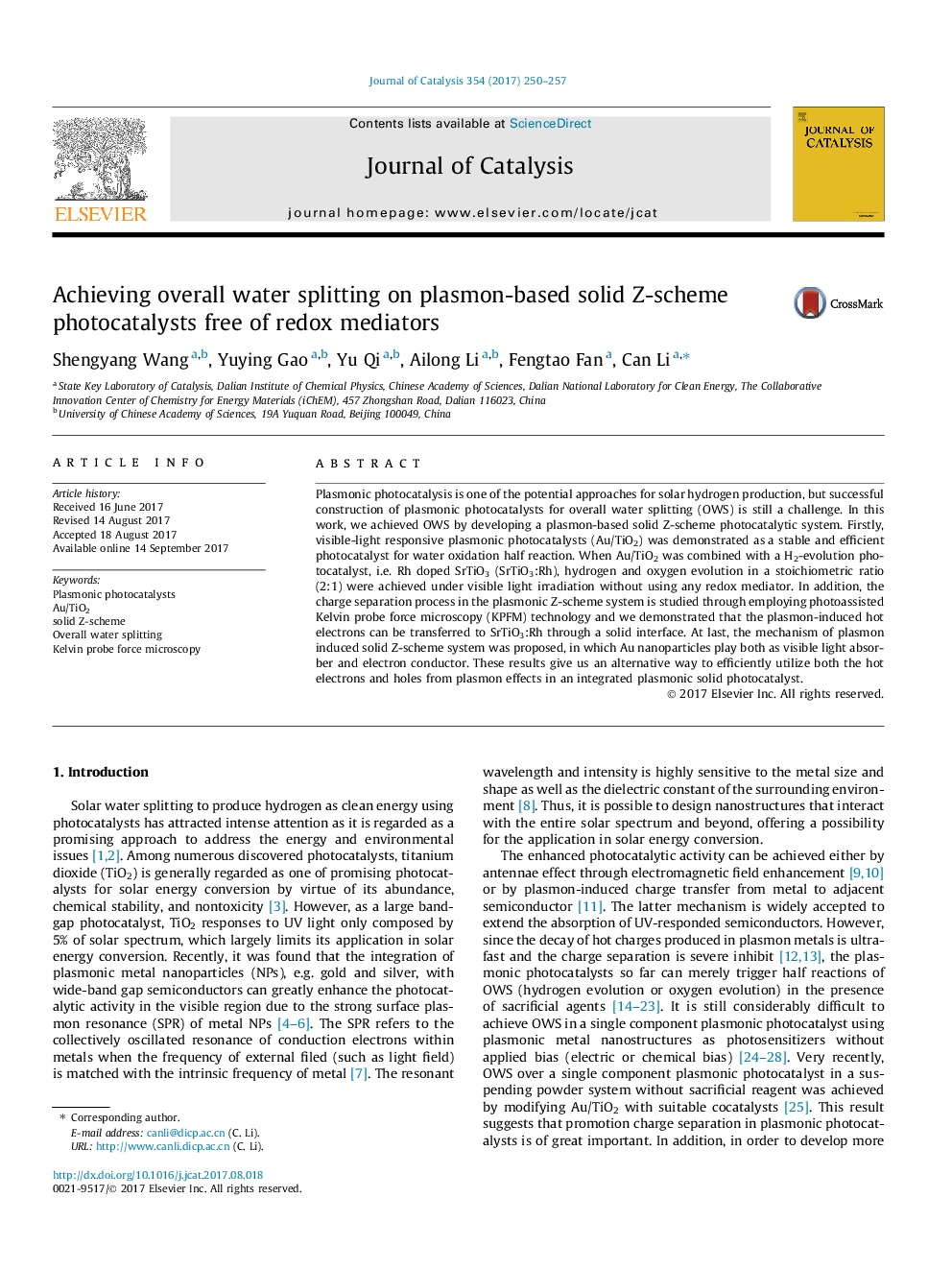| Article ID | Journal | Published Year | Pages | File Type |
|---|---|---|---|---|
| 6455519 | Journal of Catalysis | 2017 | 8 Pages |
â¢The plasmon-induced water oxidation of Au/TiO2 was achieved (λ > 480 nm).â¢The plasmon-driven solid Z-scheme system for overall water splitting was achieved.â¢The enhanced charge separation in solid Z-scheme system was demonstrated by KPFM.â¢The bi-functional role of Au NPs in Z-scheme photocatalyst was proposed.
Plasmonic photocatalysis is one of the potential approaches for solar hydrogen production, but successful construction of plasmonic photocatalysts for overall water splitting (OWS) is still a challenge. In this work, we achieved OWS by developing a plasmon-based solid Z-scheme photocatalytic system. Firstly, visible-light responsive plasmonic photocatalysts (Au/TiO2) was demonstrated as a stable and efficient photocatalyst for water oxidation half reaction. When Au/TiO2 was combined with a H2-evolution photocatalyst, i.e. Rh doped SrTiO3 (SrTiO3:Rh), hydrogen and oxygen evolution in a stoichiometric ratio (2:1) were achieved under visible light irradiation without using any redox mediator. In addition, the charge separation process in the plasmonic Z-scheme system is studied through employing photoassisted Kelvin probe force microscopy (KPFM) technology and we demonstrated that the plasmon-induced hot electrons can be transferred to SrTiO3:Rh through a solid interface. At last, the mechanism of plasmon induced solid Z-scheme system was proposed, in which Au nanoparticles play both as visible light absorber and electron conductor. These results give us an alternative way to efficiently utilize both the hot electrons and holes from plasmon effects in an integrated plasmonic solid photocatalyst.
Graphical abstractDownload high-res image (51KB)Download full-size image
